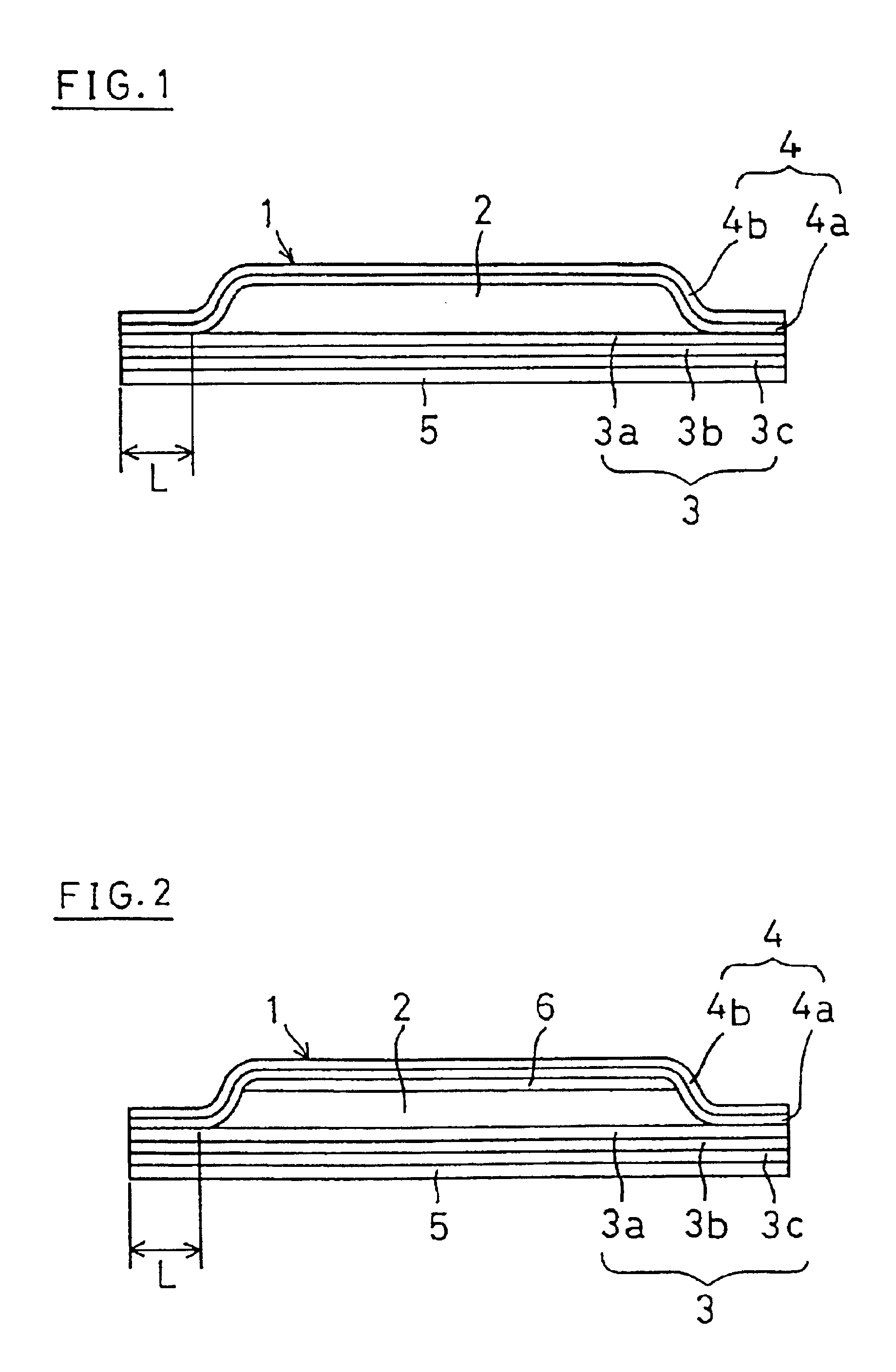Moreover, it is powdery and
highly porous, high in specific surface area and is
extremely good in contact with air, thus causing immediate starting of an oxidation reaction upon contact with air.
If an oxidative reaction with air, i.e.,
exothermic reaction, should take place during compounding exothermic compositions at a proper ratio and during the period between manufacture of the exothermic compositions and completion of manufacture of the exothermic device, this resulting in loss due to an
exothermic reaction of an exothermic composition as well as lowering of the quality of the exothermic compositions and giving rise to various problems such as coagulation of compositions resulting from the
exothermic reaction.
Specifically, lowering yield due to removal of coagulants, increased difficulty in handling, growing complications of
machine maintenance, more strict limitation of a
machine's per-day operating hours and a worker's
working hours, increased difficulty of treatment or disposal of coagulants.
If the exothermic composition is powdery, oxidation reaction with air takes place after manufacture of an exothermic device and before sealing the resulting exothermic device in the gas-tight outer pouch, this resulting in fatal defects such as lowering of the quality of an exothermic device as well as of its reliability.
This way, however, the mixer not only becomes more complicated and more expensive, this also results in increased costs of the exothermic compositions and exothermic devices,
Another method of depositing the exothermic composition when the substrate is stopped in the course of its intermittent movement has a drawback of the manufacturing speed getting lower, for the substrate stops and restarts frequently.
Since, in this case, a complicated mechanism becomes necessary for moving the deposition part for the exothermic composition at the same speed as the substrate and, worse, the exothermic composition is moistened by addition of water and, being powdery, is less frequent, there are many problems such as a strict limit for the speed of moving the mechanism, decreased reliability due to poor filling property of the exothermic composition, increased scatter of the
filling rate of the exothermic composition and eccentricity of the exothermic composition in the pouch.
Although the exothermic composition is moistened by addition of water, the
water content is low and proper for exothermic reaction, hence it is powdery and less liquid and it is extremely difficult to have it uniformly distributed in a predetermined region of the substrate.
Hence, the exothermic devices as a whole become thicker to several mm, its feel becomes stiff and disagreeable and, worse, its softness is deteriorated with an increasing difficulty to fit the complicated curvature of the
body surface with failure to fit small curvatures.
Also deteriorated are
prolongation and stretching behaviors, this resulting in failure to readily follow movement of the
body surface and giving problems of an increased stiff feel, unpleasant feel or the like.
In order to put an exothermic device in a shoe to produce warmth, it is essential to try to have it thinner but in this respect the conventional exothermic devices which are several mm thick are by far unsatisfactory.
Especially the conventional disposable body warmers, which have filled therein powdery exothermic composition, are not constant in thickness with the exothermic composition shifting therein and, when some thereof is immovably fixed to the
body surface, non-constant distribution of exothermic temperature can possibly cause a burn.
In practical manufacture, however, it is almost impossible to bond a powdery exothermic composition to the inside of the exothermic pouch and, even if it is feasible, the
bonding strength is lowered and perfect fixing is not feasible, the exothermic device is subject to separation or becomes plate-like in a user's feel.
Worse, coexistence of an
adhesive agent interferes with contact between the exothermic composition and air, this resulting in temperature unevenness and scattering of temperature, and lack of utility.
Too little water results in shortage of water required for a reaction in the presence of ample air, while too much water retards the reaction with the excessive
moisture forming a barrier against a supply of air to
metal powder.
The inventor also discovered that, when the exothermic composition is formed as a fluid, the surface area becomes markedly less than that of the powdery exothermic composition, this resulting in strict limitation of contact with air and marked suppression of the oxidation reaction with air.
 Login to View More
Login to View More 


